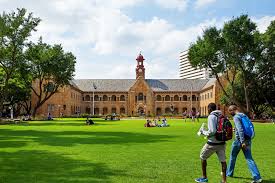University of Pretoria: University of Pretoria to launch research centre for mechanised mining systems
The University of Pretoria (UP) is set to host the South African Mining Extraction, Research, Development and Innovation (SAMERDI) Research Centre for Mechanised Mining Systems in its Faculty of Engineering, Built Environment and Information Technology.
This follows approval by the Mandela Mining Precinct (MMP), an initiative of the Department of Science and Innovation (DSI) and the Minerals Council of South Africa. The MMP was launched in 2018 to implement the SAMERDI Strategy, which aims to modernise mining in South Africa. With the support of funding from the DSI, four SAMERDI research centres are being established in partnership with various universities and the Council for Scientific and Industrial Research.
“The University of the Witwatersrand, the University of Johannesburg, the Council for Scientific and Industrial Research, and UP have been participating partners in the SAMERDI Strategy for several years. The strategy focuses on research into innovative mining methods and capacity building by training the new generation of mining researchers,” said Professor Francois Malan, Head of the Mining Resilience Research Centre at UP, who will head the new centre along with Professor Stephan Heyns of the Department of Mechanical and Aeronautical Engineering.
Prof Malan explained that the MMP is being implemented through five thematic applied research focus areas: the longevity of current mines, mechanised mining systems, advanced ore body knowledge, real-time information management systems, and the successful application of technology centred on people.
“Some of the older gold mines are deep and are reaching the end of their lives if new technologies and more cost-effective mining methods are not developed,” Prof Malan said. “The efficiencies and profitability of platinum mines can also be significantly improved with new mechanised technologies. A further improvement in mine safety is an ongoing challenge, and mechanised mining methods should be developed to remove mine employees from potentially hazardous working environments.”
He explained that the centre will function as a multidisciplinary research initiative between the Departments of Mining Engineering, and Mechanical and Aeronautical Engineering. “It will establish research expertise in automated condition and performance assessment of rock and equipment from the parameters obtained during drilling and blasting operations. The practical implication of this is that maintenance of equipment can be done more proactively. Furthermore, significantly more data can be obtained from the behaviour of rock mass behaviour. This will allow designs to be adapted if, for example, a harder or softer rock mass is encountered in different areas.”
Prof Malan said he is excited about the collaboration between the departments. “Engineering disciplines often work in isolation. The mining industry will reap the benefits of this collaborative initiative as we can marry the insights of the rock engineering profession and the mechanical engineers.”
The centre’s research activities relate to continuous rock drill condition assessment – an estimation of rock strength properties using selected mechanical parameters obtained during drilling – and the predictive maintenance management of mechanised mining equipment. “In simple terms, the ease of drilling into the rock can, for instance, be used to estimate the strength of the rock,” Prof Malan explained.
The focus of these centres is fundamental research: the basic and pure research that creates new knowledge about mining, technology and data, systems and processes, and the people associated with the sector. The outputs from this research will be aligned with and inform applied research at the MMP.
“This fundamental, home-grown research is required, as South Africa possess orebodies with a geometry that is unique in the world – this know-how cannot be imported from other countries,” Prof Malan said. “South Africa has a proud mining history, and we need dedicated research to generate new knowledge of how rock mass behaves and what the best mechanised equipment for our local mining conditions are.”

